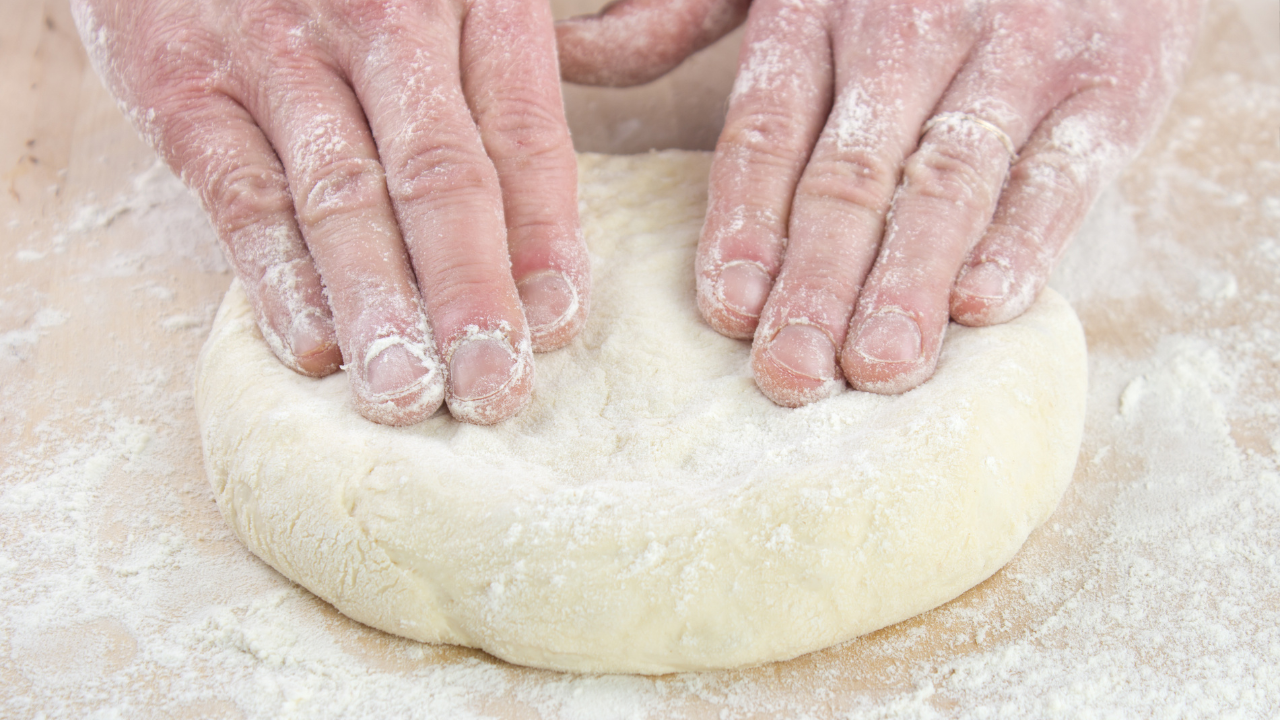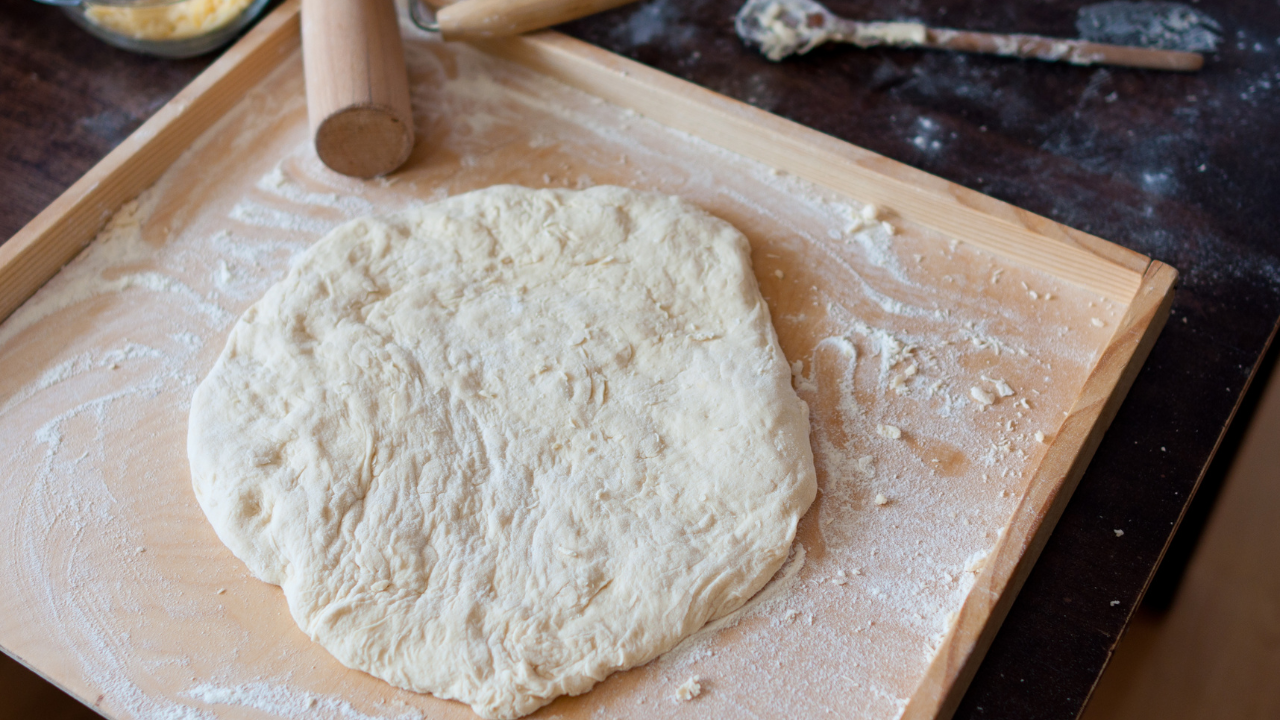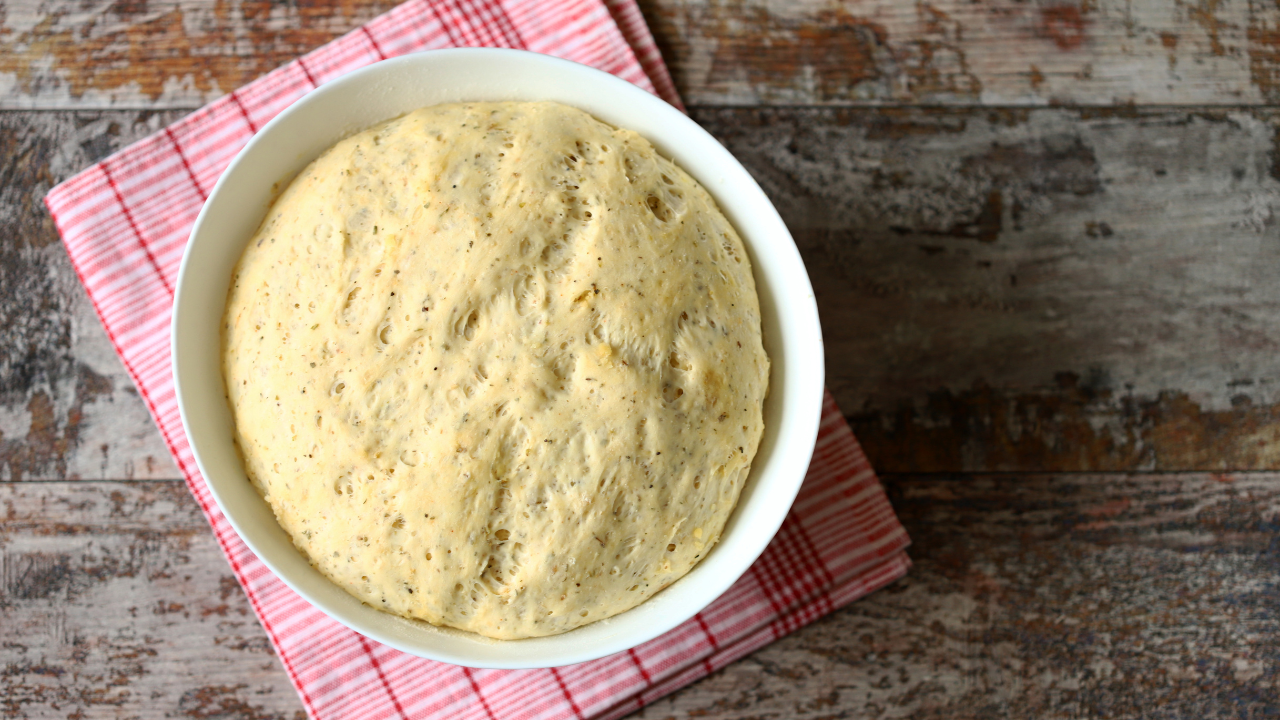Pizza is one of the most well-liked and delectable foods on the planet, but if you don’t have yeast, preparing pizza at home might be difficult. A live organism called yeast contributes to the dough’s ability to rise and gives it a fluffy, light feel. It can be inconvenient, though, if you are in a rush or don’t have any yeast on hand, as yeast needs time and patience to activate and proof. Luckily, there is a method for making pizza dough without yeast that requires just a few basic ingredients and skills. This post will explain how to prepare pizza dough without yeast and address some often asked questions and issues that could come up. Come on, let’s get going!
Table of Contents
ToggleHi Bold Bakers!

Greetings if you’re new to this blog! I’m Copilot, your AI baking partner. I enjoy passing along my recipes, advice, and techniques to help you improve as a baker. This site contains entertaining and helpful content for all skill levels. Please don’t hesitate to ask a question, leave a remark, or provide feedback—I always appreciate hearing from you. For further information, you can also sign up for my email and follow me on social media. I’m grateful you could come, and have fun baking!
Why is My Pizza Dough Very Sticky?

- When creating pizza dough without yeast, one of the most frequent issues that arises is that the dough is extremely sticky. This may occur for a number of reasons, including:
- Either the dough was made with too much water or not enough flour. The dough’s consistency greatly depends on the water to flour ratio. The dough gets excessively sticky and wet if you add too much water. The dough won’t have enough structure or strength if you don’t add enough flour. Use roughly 3/4 cup of water for every 2 cups of flour, as a general guideline, however you may need to modify this based on the preference.
- You did not knead the dough enough or too much. Kneading is the process of stretching and folding the dough to develop gluten, which is the protein that gives the dough elasticity and strength. If you do not knead the dough enough, the gluten will not form properly, and the dough will be sticky and weak. If you knead the dough too much, the gluten will become overworked and tight, and the dough will be tough and hard. A good way to tell if the dough is kneaded enough is to perform the windowpane test: take a small piece of dough and stretch it gently with your fingers. If the dough forms a thin and transparent membrane without tearing, the dough is ready. If the dough tears easily or does not stretch at all, you need to knead it more or less, respectively.
- The dough was not allowed to rest for long enough or at all. To relax the gluten and enable the flour to absorb the water, the dough is rested for a period of time. The gluten will be excessively tight and the dough will be sticky and difficult to shape if you don’t give it enough time to rest. The dough will become dry and crumbly and lose its elasticity if you let it sit for an extended period of time. Ten to fifteen minutes is a reasonable amount of time to let the dough rest, but you may need to change this based on your kitchen’s temperature and the quantity of the dough.
If the dough is too sticky, try gradually adding more flour until the mixture is smooth and workable. Depending on the circumstances, you can also attempt kneading the dough to a certain extent. Depending on the circumstances, you can also try letting the dough rest for a little while. But take care not to skip any of these processes, as they will change the dough’s flavor and texture.
Why is Pizza Dough Without Yeast is Easier & Faster Than Yeasted Pizza Dough?

Compared to pizza dough made with yeast, yeast-free pizza dough provides the following benefits:
- Because you won’t have to bother with activating and proofing the yeast, which may be difficult and time-consuming, it is simpler to create.
- Additionally, you don’t have to be concerned about your kitchen’s humidity and temperature, as these factors might influence the activity of yeast and the rise of dough.
- Making it is quicker because there is no waiting around for the dough to rise, which might take many hours or even overnight. The dough can be prepared in advance and used immediately away, or it can be frozen or refrigerated for later use.
- It tastes and feels strange, which some individuals might find appealing. Compared to yeasted pizza dough, which has a lighter and airier texture as well as a more nuanced and yeasty flavor, yeastless pizza dough is thicker, chewier, and has a more neutral flavor. Either or both may appeal to you, depending on your preferences and taste.
However, there are certain drawbacks to using yeast-free pizza dough, including:
- It is less adaptable because you can’t use it to make other bread varieties or baked products like pretzels, bagels, rolls, and buns that call for yeast. Furthermore, since it won’t rise sufficiently to produce a light and fluffy crust, you can’t use it for deep-dish or thick-crust pizza.
- It is less nutrient-dense because yeast incorporates various vitamins and minerals, like iron, zinc, selenium, and B vitamins, into the dough.
- Additionally, some of the starches and sugars in the flour are broken down by yeast, which facilitates faster absorption and digestion.
- Because yeast functions as a natural preservative and prolongs the freshness and quality of the product, it has a shorter shelf life.
How to Store No-Yeast Pizza Dough

The pizza dough can be frozen or refrigerated for later use if it will not be used right away. It can be done as follows:
What Is the Duration of Yeastless Dough?
- In the refrigerator: The pizza dough can be refrigerated for up to three days if it is kept in an airtight container or ziplock bag. Allow it to soften and relax for around thirty minutes at room temperature before using.
- In the freezer: The pizza dough can be frozen for up to three months if it is kept in an airtight container or ziplock bag. Thaw it overnight in the refrigerator or for a short while in the microwave before using it. Then, let it to come to room temperature for around half an hour to allow it to soften and relax.
Tips and Tricks to Making Pizza Dough Without Yeast
Ingredients

- For optimal results, use bread flour or all-purpose flour. The moderate amount of gluten in all-purpose flour provides the dough with sufficient strength and elasticity. Because bread flour contains more gluten, the dough is more elastic and strong but also more difficult to shape. You can also use alternative flours, such as whole wheat flour, but the flavor and texture of the dough will change and you may need to add more or less water to get the right consistency.
- As a leavening agent, use baking soda or powder. The dough will rise and slightly expand with the help of carbon dioxide bubbles produced by baking soda or powder. Nevertheless, the dough will remain dense and chewy since they won’t cause as much rising and expansion as yeast does. Alternatively, you can use a combination of baking soda and powder, which will produce more bubbles and a lighter texture along with a flavor that is more alkaline. To counteract the taste of the baking soda and initiate a reaction, you can incorporate some acid, like vinegar or lemon juice.
- To improve the dough’s flavor and texture, add salt. In addition to strengthening the gluten and regulating the leavening, salt will provide the dough some flavor and seasoning. On the other hand, avoid adding too much salt as this may make the dough overly dry and salty. For every two cups of flour, a recommended ratio of salt to use is 1/2 teaspoon; however, you can experiment to suit your tastes.
- To give the dough additional moisture and richness, add oil. Oil will assist keep the dough from sticking and drying out while also giving it some moisture and richness. But, avoid adding too much oil as this will make the dough overly thick and greasy. You can tweak this to suit your taste and desire, but two tablespoons of oil for every two cups of flour is a fair ratio. Other fats like butter, margarine, or others can be used, but they will change the dough’s flavor and texture.
Instructions
Mix 1 teaspoon salt, 3 teaspoons baking powder, and 2 1/2 cups flour—preferably bread flour—in a big bowl.
Mix in 3/4 to 1 cup warm water and 1 tablespoon olive oil, stirring to combine the ingredients into a ball. If the dough is too sticky, add more flour; if it is too firm, add more water.
After transferring the dough to a floured surface, knead it for ten minutes or until it becomes elastic and smooth. To mix and knead the dough, you can either use a food processor or a stand mixer fitted with a dough hook.
Preheat the oven to 400°F (204°C). Bake the dough for 15 to 25 minutes, or until it is cooked through and gently brown.
After taking the dough out of the oven, cover it with your preferred sauce. Put the pizza back in the oven and continue baking for a further five to ten minutes, or until the cheese is bubbling and melted.
Either divide the dough into smaller sections and roll each one into a large circle to make little pizzas. The dough should be placed on a
FAQs
1. Q: How long does yeast-free pizza dough last in storage?
A: Store in the fridge for 1-2 days or freeze for longer storage.
2. Can dough be frozen without yeast?
A: You can freeze it for up to three months if you wrap it tightly.
3. Q: How should yeastless pizza dough be stored?
A: To preserve freshness, store it in the refrigerator in an airtight container.
4. Q: Can I use yeast-free dough to create pizza right away?
A: Yes, however the texture gets better after 30 minutes of relaxation.
5. Q: Is it simple to create pizza dough without yeast?
A: Definitely! Making homemade pizza only needs a few basic supplies and easy instructions.

Meet Misha Mehboob, a passionate food enthusiast and computer science student from Sargodha University. Misha’s culinary journey is fueled by her love for exploring new flavors and experimenting in the kitchen.
At CrispyEatHub, Misha shares her creative recipes and practical cooking tips to inspire fellow food lovers on their culinary adventures. From quick weeknight dinners to indulgent desserts, there’s something delicious for every palate.
Join Misha as she combines her love for food and technology to create mouthwatering dishes that delight the senses and bring people together. Let CrispyEatHub be your go-to resource for culinary inspiration and delicious recipes that make every meal memorable.

